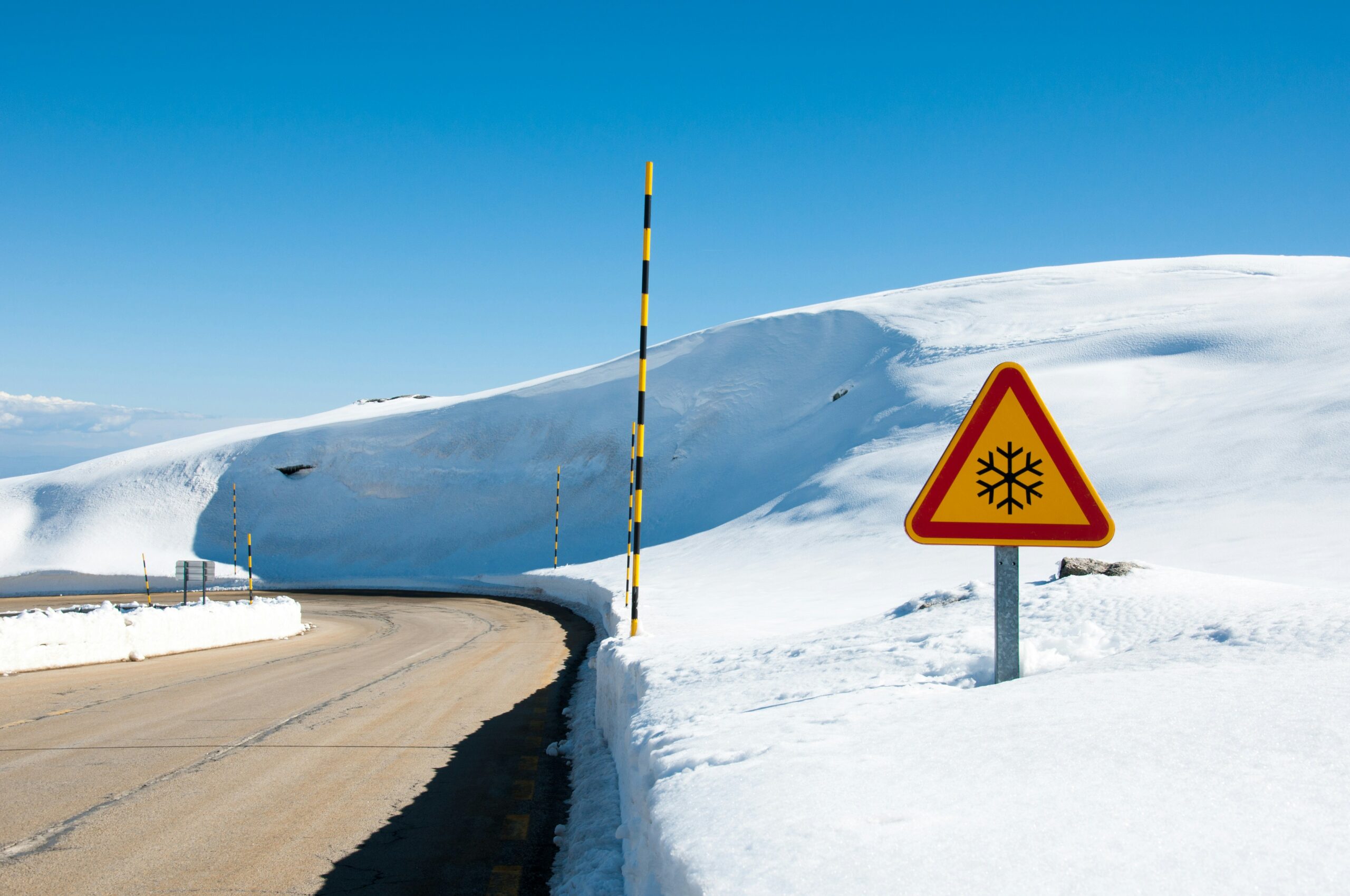Introduction to Extreme Cold Warnings
Extreme cold warnings are critical alerts issued by meteorological agencies to inform the public about dangerously low temperatures and their associated hazards. In Calgary, given its unique geographical location and climatic conditions, these warnings play a vital role in ensuring the safety of residents during winter months. An extreme cold warning is typically issued when the temperature, combined with wind chill, poses a risk of frostbite and hypothermia if individuals are exposed to the elements for prolonged periods.
The issuance of these warnings generally occurs under specific meteorological conditions. For instance, when temperatures drop significantly below freezing, often exacerbated by high winds, the wind chill factor can make the air feel even colder. This phenomenon can accelerate the onset of cold-related health conditions, heightening the urgency of these alerts. In Calgary, winter temperatures can plummet, and strong winds can create an exceptionally harsh environment, warranting the need for constant vigilance and preparedness among its inhabitants.
These warnings are essential for public safety, urging residents to take necessary precautions. The severity of the conditions can influence the daily activities of individuals, ranging from school closures to advisories against outdoor activities. By understanding what an extreme cold warning entails, Calgary residents can better prepare themselves and their communities. Protective measures, such as wearing appropriate clothing, limiting time spent outside, and ensuring homes are adequately heated, are all critical in mitigating the risks associated with extreme cold. This preparation is vital, as ignoring these warnings can lead to serious health complications, highlighting the importance of community awareness and responsiveness during Calgary’s winter months.
What Causes Extreme Cold in Calgary?
Calgary, located in the southern part of Alberta, Canada, experiences a distinct climate characterized by significant temperature fluctuations. One of the primary contributors to extreme cold events in the region is the presence of cold Arctic air masses. These air masses originate from the northern polar regions, where temperatures can plummet to severe lows. When these frigid air bodies migrate southward, they can envelop Calgary, leading to drastic drops in temperature.
In conjunction with Arctic winds, local weather patterns play a crucial role in amplifying cold conditions. Calgary’s location relative to the Rocky Mountains significantly impacts its climate. As prevailing winds move toward the mountains from the west, they can be interrupted, causing chinook winds to form. While chinooks can lead to temporary warming, they can also heighten the influence of cold Arctic air during winter months. Consequently, the interplay of mountain pressures and frigid winds adds to extreme cold events, resulting in dangerously low wind chill factors.
Moreover, Calgary’s geographical features, including its elevation and proximity to the foothills of the Rocky Mountains, contribute to its volatile weather. Standing at approximately 1,045 meters (3,428 feet) above sea level, Calgary is subject to changes in atmospheric pressure that can rapidly impact temperature and wind conditions. The city also experiences a continental climate, which is characterized by less moisture and greater temperature swings compared to more temperate regions, further leading to the prevalence of extreme cold during winter. Understanding these climatic and geographic attributes is essential for comprehending the unique phenomenon of extreme cold in Calgary’s weather patterns.
The Role of Wind Chill in Extreme Cold Events
Wind chill is a significant factor in understanding extreme cold events, particularly in regions such as Calgary, where temperatures can plummet sharply during winter. It is essential to recognize that wind chill does not affect the actual air temperature; instead, it represents the perceived temperature that people experience due to the combined effects of wind and cold conditions. The calculation of wind chill is based on a formula that considers the air temperature and wind speed. As wind speed increases, it accelerates heat loss from the human body, leading to a lower perceived temperature. This concept plays a crucial role in guiding individuals to dress appropriately and take necessary precautions during the colder months.
The physiological effects of wind chill are critical for understanding the dangers associated with extreme cold. When exposed to windy and cold conditions, the body’s ability to maintain a stable core temperature becomes compromised. Skin and extremities, such as fingers and toes, are particularly vulnerable to heat loss, increasing the risk of frostbite in severe cases. Wind chill can lead to hypothermia as well, a life-threatening condition that occurs when the body’s temperature falls dangerously low. It is imperative to note that even mild temperatures can become hazardous when wind chill is factored in, underscoring the importance of monitoring weather reports and heeding cold warnings.
In Calgary, where winters can be particularly brutal, understanding wind chill helps in preparing for and mitigating the impacts of extreme cold. Residents are encouraged to stay informed about wind chill readings and to utilize strategies that reduce exposure to harsh weather conditions. Effective preparation includes wearing layered clothing, shielding exposed skin, and limiting time spent outdoors when wind chill values indicate heightened risk. Through awareness and education around wind chill, individuals can better navigate the challenges posed by Calgary’s winter climate.
Health Risks Associated with Extreme Cold and Wind Chill
Extreme cold weather can lead to severe health risks, significantly exacerbated by wind chill factors. Frostbite and hypothermia are two of the most critical conditions associated with prolonged exposure to frigid temperatures. Frostbite, which occurs when skin and underlying tissues freeze, often affects extremities such as fingers, toes, earlobes, and the nose. Symptoms of frostbite include numbness, tingling, and discoloration resembling white or gray patches. It is essential to recognize these signs early, as untreated frostbite can result in severe tissue damage and possible amputation.
Hypothermia, another serious concern, occurs when body heat is lost faster than it can be generated, leading to a dangerously low core body temperature (below 95°F or 35°C). Symptoms may initially present as shivering, confusion, drowsiness, and a weak pulse. As the condition worsens, individuals may lose coordination, and shivering might cease altogether. It is critical to seek medical attention urgently if hypothermia is suspected, as it can be life-threatening.
Certain populations are particularly vulnerable to the impacts of extreme cold and wind chill, including the elderly, individuals with chronic illnesses, and those experiencing homelessness. Preventative measures for these groups are essential to minimize health risks. Recommendations include dressing in multiple layers of warm clothing, ensuring adequate nutrition, and seeking shelter from the wind. It is vital to establish community resources, such as warming centers, where vulnerable individuals can find refuge during extreme cold spells.
Overall, awareness and education regarding the symptoms and preventive actions related to frostbite and hypothermia can significantly reduce the health hazards posed by extreme cold and wind chill conditions. Taking proactive steps to protect oneself and others is essential in combating the potential dangers of Calgary’s harsh winter weather.
Preparing for Extreme Cold: Safety Guidelines
Calgary’s extreme cold warnings often come with dangerously low temperatures and biting wind chill. To ensure safety during these harsh weather conditions, residents should take proactive measures. The first step in preparing for extreme cold is to dress appropriately. Layering is key; wearing multiple layers helps trap body heat while providing insulation. A thermal base layer, coupled with an insulating layer like fleece, and a waterproof outer shell, will keep individuals warm and dry. Don’t forget essential cold-weather accoutrements such as mittens, hats, and scarves, as these areas are especially susceptible to frostbite.
In addition to proper clothing, residents should equip their homes and vehicles with emergency supplies. Essential items for homes include blankets, non-perishable food, bottled water, and a battery-operated radio. A well-stocked first-aid kit is also crucial in case of minor injuries. For vehicles, in case of becoming stranded, carry a winterized emergency kit that includes items such as a flashlight, extra batteries, a shovel, and road flares. It is advisable to also have extra warm clothing and non-perishable snacks in your car.
Furthermore, it is important to stay informed. Residents should monitor local weather forecasts for updates on extreme cold warnings and alerts. Before an extreme cold event, ensure that all windows and doors are properly sealed to prevent heat loss. Consider taking additional measures such as disconnecting outdoor hoses, allowing faucets to drip to prevent freezing, and keeping indoor environments at a consistent warmth.
During extreme cold periods, it is essential to limit outdoor activities, particularly for vulnerable populations such as children and the elderly. If venturing outside is unavoidable, always notify someone of your intended plans, carry a mobile phone, and stay within close proximity to shelters. By proactively preparing for extreme cold, Calgary residents can enhance their overall safety and comfort amidst challenging winter conditions.
What to Do During an Extreme Cold Warning
When an extreme cold warning is issued, it is essential to prioritize safety and well-being. One of the most effective strategies is to stay indoors as much as possible. The harsh conditions can pose significant health risks, including frostbite and hypothermia, particularly for vulnerable populations. Ensuring warmth in your home is crucial, so keep doors and windows sealed to retain heat and minimize drafts.
In addition to staying indoors, it is important to reduce your exposure to the extreme cold when venturing outside is unavoidable. Opt for layered clothing that retains body heat, wear insulated gloves, scarves, and hats to protect extremities, and limit outdoor activities to essential errands. If you must go outside, it is advisable to keep your exposure brief and remain aware of the signs of cold-related illnesses.
Community support plays a vital role during periods of extreme cold. Check on your neighbors, especially those who may be elderly, disabled, or living alone. A simple phone call or a quick visit can make a difference in someone’s well-being. Encourage a communal approach to warmth by sharing resources such as the use of heating appliances or emergency supplies, fostering a sense of resilience that is crucial during bitter cold events.
Additionally, take advantage of community resources such as local shelters or warming centers. These facilities can provide safe, warm environments for those unable to heat their homes effectively. Local organizations often have programs in place to assist those most affected by extreme weather conditions, whether providing blankets, food, or safe refuge from the cold.
By taking proactive measures during extreme cold warnings, individuals can protect themselves and support the broader community through these challenging weather events.
Impact on Transportation and Daily Life
The extreme cold and wind chill experienced in Calgary can significantly disrupt transportation systems and alter daily life activities for its residents. During such severe weather events, public transit services, including buses and light rail, often face operational challenges. Delays, cancellations, and reduced service frequency are common as transit agencies prioritize safety and adapt schedules to the changing conditions. Commuters are advised to stay informed about transit updates and factor in extra travel time to account for potential disruptions during extreme cold events.
For those driving in Calgary, the risks associated with cold weather necessitate heightened caution on the roads. Icy conditions, reduced visibility, and the possibility of vehicle breakdowns can contribute to a dangerous driving environment. It is essential for drivers to equip their vehicles with appropriate winter tires and carry emergency kits that include essentials such as blankets, food, and water. Furthermore, it is prudent to maintain a safe following distance and adjust driving speed to account for slippery roads. By taking these precautions, drivers can significantly reduce the likelihood of accidents during extreme cold spells.
The impact of extreme cold is not limited to transportation; it also extends to schools and businesses throughout the city. In many cases, school districts may issue weather-related closures or delays if temperatures reach dangerous levels, prioritizing the safety of students. Similarly, local businesses may need to adapt their operating hours or implement measures to protect both employees and customers. These adjustments underscore the broader implications of extreme cold weather, prompting residents to modify their plans and routines accordingly. By understanding the consequences of such conditions, Calgary’s citizens can better prepare for and navigate the challenges posed by extreme cold events.
Historical Context: Past Extreme Cold Events in Calgary
Calgary, with its unique geography and climate, has witnessed several extreme cold events over the decades. One of the most notable occurrences was the winter of 1886-87, when temperatures plummeted to a staggering -45.0°C (-49.0°F). This was a defining moment in Calgary’s history, as residents faced considerable hardships due to the intense cold, affecting daily life and local services. Community responses included the establishment of heating stations to assist those in need, showcasing the resilience and cooperation among Calgarians during dire circumstances.
Another significant event was recorded in January 1942, during which the city registered one of its lowest temperatures at -43.3°C (-45.9°F). This cold snap extended for several days, compelling local schools to close and pushing community shelters to extend their operations for the vulnerable populations. City services worked diligently to ensure that public transport could continue to operate safely, despite the extreme wind chill, which often made conditions feel even colder. Such events underline the challenges and adaptations that have been necessary through the years.
Fast forward to the winter of 2018, Calgary experienced a severe cold warning as temperatures dropped significantly, often ranging between -30°C and -35°C (-22°F to -31°F). The combination of these icy temperatures with high winds resulted in dangerously low wind chill factors, which fostered a heightened public awareness of the risks associated with prolonged exposure to extreme cold. Calgary’s emergency services issued advisories encouraging residents to limit outdoor activities and to be prepared for potential emergencies.
These historical events illustrate not only the severe cold Calgary can face but also the city’s capacity to respond and support one another during such challenging situations. Understanding the patterns and trends in these occurrences can play a pivotal role in preparing for future extreme cold events, ensuring that both the community and city services are equipped to handle the impacts effectively.
Resources and Support Networks
During extreme cold warnings in Calgary, it is imperative for residents to be aware of the resources and support networks available to ensure their safety and well-being. Local government advisories are one of the first places community members should look for updates and information regarding cold weather conditions. The City of Calgary regularly issues alerts that include vital details on temperature drops, wind chill factors, and related safety measures.
In situations of severe cold, access to emergency shelters becomes crucial. The Calgary Homeless Foundation provides a list of local shelters that offer emergency accommodation during extreme temperatures. These facilities not only provide a warm bed but often extend support services that include food, medical assistance, and counseling. Residents can contact the Foundation directly or visit their website for up-to-date information on shelter availability.
Warming centers are also established during cold emergencies, where individuals can find a safe space to escape from the frigid temperatures. Various community centers throughout Calgary are designated as warming centers, and they offer a refuge from the cold along with basic amenities. Information about these locations is typically made available through the City of Calgary’s official communication channels.
Health services play a vital role during extreme cold events as well. The Alberta Health Services provides guidance on recognizing and treating cold-related health conditions such as frostbite and hypothermia. Community members are encouraged to reach out to Health Link at 811 for health-related inquiries and support.
For those seeking further assistance, local non-profits and community organizations often provide additional resources geared towards vulnerable populations, including families and the elderly. These organizations can offer mobile outreach services, food assistance, and heat assistance programs. Overall, residents of Calgary are encouraged to stay informed, access available resources, and prioritize community support during periods of extreme cold. Access to help is essential in navigating these challenges effectively.


